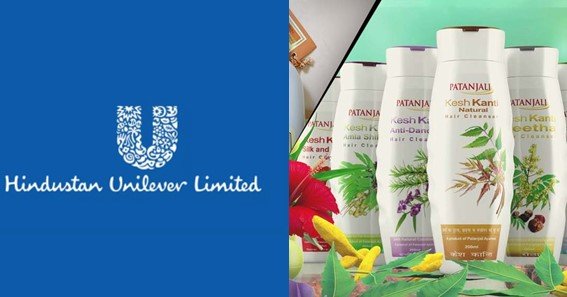The competition between Hindustan Unilever vs Patanjali has reshaped the Indian FMCG landscape in recent years. While Hindustan Unilever (HUL) is a global giant with decades of market dominance, Patanjali has quickly risen as a formidable local player, leveraging India’s preference for Ayurvedic and natural products. This article explores the market competition: Hindustan Unilever vs Patanjali, analyzing their market share, growth strategies, product portfolios, and financial performance.
Hindustan Unilever vs Patanjali: Market Overview
The battle of Hindustan Unilever vs Patanjali represents a clash between an established multinational company and an Indian brand that has captured the imagination of millions through its Ayurvedic ethos.
- Hindustan Unilever: Known for its extensive product range across personal care, home care, and foods, HUL has a stronghold on urban and rural markets.
- Patanjali: With a focus on Ayurvedic and herbal products, Patanjali appeals to the rising demand for natural and indigenous alternatives.
Hindustan Unilever vs Patanjali Market Share
In the Hindustan Unilever vs Patanjali market share battle, both companies dominate their respective niches:
- HUL leads in personal and home care segments, with brands like Dove, Surf Excel, and Lux commanding significant loyalty.
- Patanjali has carved a strong presence in food products and Ayurvedic health supplements, leveraging its Indian identity to gain market share.
Hindustan Unilever vs Patanjali Product Portfolio
The Hindustan Unilever vs Patanjali product portfolio comparison highlights contrasting approaches:
- Hindustan Unilever: Offers a diverse mix of global and local brands, including detergents, skincare products, ice creams, and beverages.
- Patanjali: Focuses on herbal and Ayurvedic products, from ghee and honey to herbal toothpaste and health tonics, appealing to health-conscious consumers.
Hindustan Unilever vs Patanjali Growth Strategy
The Hindustan Unilever vs Patanjali growth strategy showcases their unique approaches:
- HUL: Focuses on premiumization, innovation, and rural penetration. Its investments in sustainability and digital transformation keep it competitive.
- Patanjali: Leverages its strong brand positioning as an Indian and Ayurvedic leader, expanding its product range to include staples, healthcare, and cosmetics.
Financial Performance of Hindustan Unilever and Patanjali
The financial performance of Hindustan Unilever and Patanjali reveals their different trajectories:
- HUL’s global backing and diversified portfolio result in steady growth and profitability.
- Patanjali, though newer, has achieved rapid growth by catering to local tastes and preferences, but its financial results have been impacted by scaling challenges.
Differences Between Hindustan Unilever and Patanjali
- Brand Positioning: HUL emphasizes global quality and innovation, while Patanjali focuses on its Indian and Ayurvedic heritage.
- Target Audience: HUL appeals to a broad consumer base across socio-economic groups, while Patanjali targets health-conscious and nationalist buyers.
- Product Focus: HUL offers a balanced mix of global and local brands, whereas Patanjali centers on Ayurvedic and herbal offerings.
In conclusion, the competition between Hindustan Unilever vs Patanjali continues to shape the consumer goods market, with each brand carving its own niche in the industry.
FAQ
1. What is the main difference between Hindustan Unilever and Patanjali?
HUL is a multinational company with a diverse portfolio, while Patanjali is an Indian brand specializing in Ayurvedic and herbal products.
2. Who has a larger market share in India?
HUL has a larger market share in personal and home care, while Patanjali dominates segments like health supplements and herbal foods.
3. What is Patanjali’s growth strategy?
Patanjali focuses on leveraging its Indian heritage, expanding its Ayurvedic offerings, and penetrating rural markets.
4. How does Hindustan Unilever compete with Patanjali?
HUL counters Patanjali by innovating in natural and herbal product categories, maintaining strong distribution channels, and launching localized campaigns.
5. Which company is more profitable?
HUL is more consistently profitable due to its global backing and diversified revenue streams, while Patanjali’s profitability depends on its scaling capabilities.
Disclaimer: This article is for informational purposes only and should not be taken as financial advice. Always consult a financial advisor for investment decisions.










